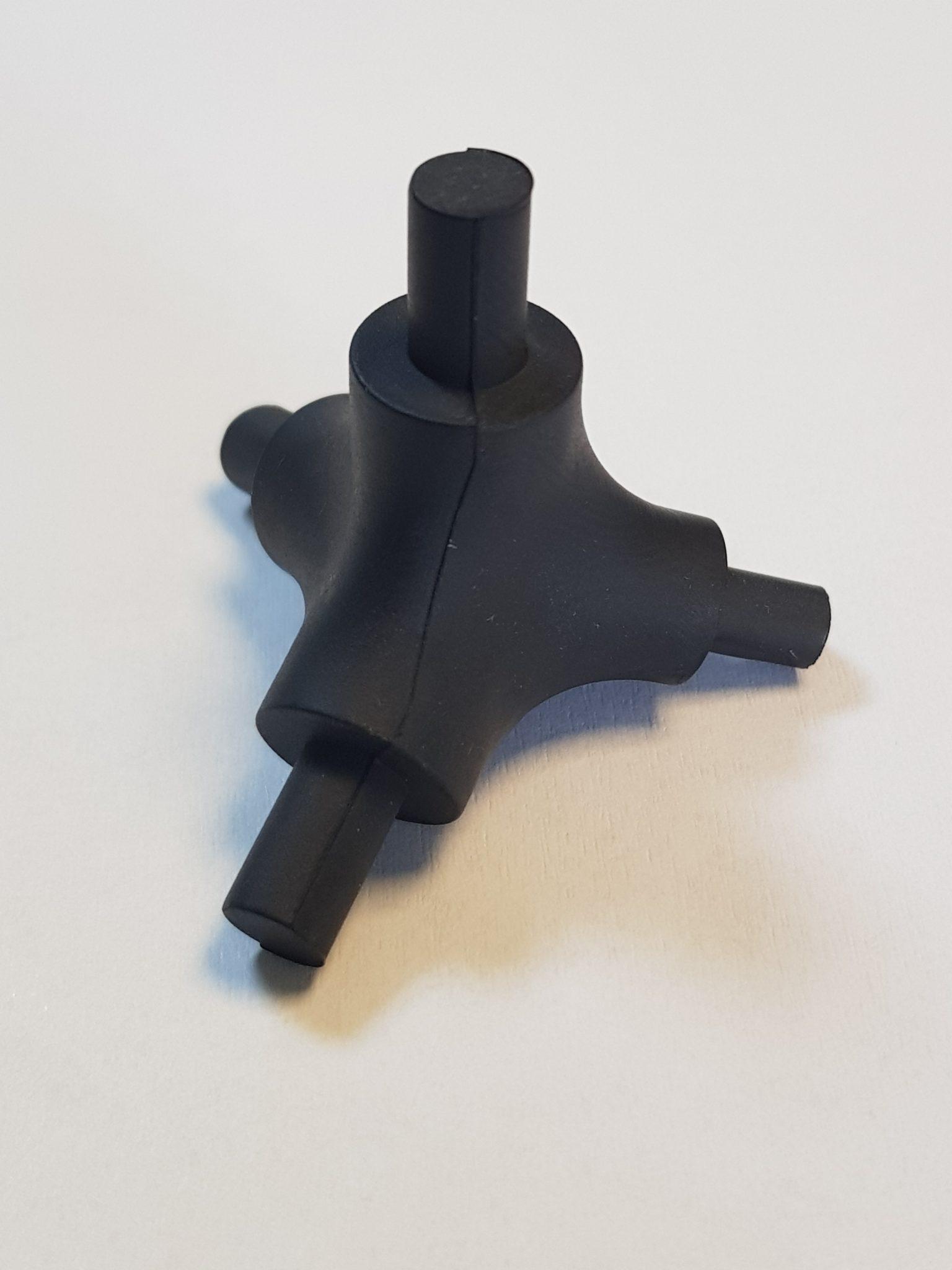This website uses cookies so that we can provide you with the best user experience possible. Cookie information is stored in your browser and performs functions such as recognising you when you return to our website and helping our team to understand which sections of the website you find most interesting and useful.
Reducing friction between elastomers with self-lubricating rubber components
Due to their versatility and good mechanical properties, the use of silicone elastomers is widespread in variety of industrial applications. Elastomers have a high coefficient of friction and significant surface adhesion. These properties are beneficial in some industries and can be a problem in others due to unwanted abrasion.
The friction of elastomers is either reduced by adding various lubricants, or special self-lubricating rubber components are used as an alternative. In this article, the focus will be on the latter and we also introduce the advantages of using self-lubricating technology.
Why are adhesion and friction a concern?
In healthcare, silicone components are often used as a material for medical devices and equipment due to their sterility, flexibility, and cushioning properties. However, the use of vulcanized silicone in healthcare is not at all straightforward. Because of
- high surface adhesion,
- high coefficient of friction
- and tendency to stick together,
production of precision rubber parts made of elastomers is a real challenge even with the latest manufacturing technologies.
In the case of injection-molded or extruded silicone products, friction created on contact prevents the surfaces from sliding against each other. Most equipment manufacturers eliminate this by coating the injection molded product with a special lubricant in a separate step of the production process.
What is a self-lubricating rubber part?
Self-lubricating rubbers are typically Liquid Silicone Rubbers, also known as LSRs. During production, a special additive is injected into the LSR mixture. After vulcanization, the injected lubricant is gradually released onto the surface of the cured elastomer.
 Self-lubricating silicone rubber at SIC
Self-lubricating silicone rubber at SIC
The application of self-lubricating technology is useful because it prevents the vulcanized silicone surfaces from
- adhering to each other,
- and frictional abrasion,
thus increasing the lifetime of the equipment.
Self-lubricating rubber components can be made from materials with varying concentrations of lubricant. It is important to choose the right concentration, as an inappropriate lubricant concentration will degrade the mechanical properties of the mixture.
Self-lubricating technology can be used for rubbers between 15 and 60 on the Shore A hardness scale.
Thanks to its properties, LSR has a wide range of applications. Its biocompatibility – not being toxic to humans – makes it a preferred choice in the healthcare sector.
How do self-lubricating rubber parts work?
One of the advantages of self-lubricating rubber parts is that the lubricant is injected directly into the compound during the manufacturing process, not applied to the surface afterward. It does not require an extra step, therefore shortening the manufacturing process and increasing its efficiency.
Silicone oil added as a lubricant modifies the modulus, tensile strength, and friction coefficients of the mixture. The patented additive is continuously released over time after vulcanization and appears on the surface of the component.
As previously mentioned, the concentration of the silicone oil in the mixture is of major importance. However, the extent to which the oil is released onto the surface is not only dependent on the lubricant concentration but is also affected by the
- composition,
- hardness,
- structure,
- temperature,
- elapsed time
- and atmospheric pressure.
Industries applying self-lubricating rubber
Nowadays, the use of self-lubricating technology has become indispensable for many industries. Most frequently, silicone rubber
- connectors,
- sealing elements,
- hoses,
- valves,
- “O” rings,
- equipment with sliding module
- and gaskets
are made from it to ensure its lubricating properties during application.
Besides medical applications, self-lubricating technology is used
- in automotive and aviation industries,
- in machining,
- packaging,
- cold storage and
- air conditioning technology.
Special self-lubricating rubber parts from SIC Hungary
We provide high-quality self-lubricating silicone and graphite-filled parts for a wide range of industrial applications, agricultural machinery, and commercial vehicles.
The efficiency and durability of agricultural harvesters subjected to extreme conditions can be significantly increased with our graphite-filled NR hoses.
If you need self-lubricating rubber parts, please contact us and choose from our wide range of self-lubricating silicone wheels, bumpers, gaskets, washers, or products manufactured according to your custom parameters!

